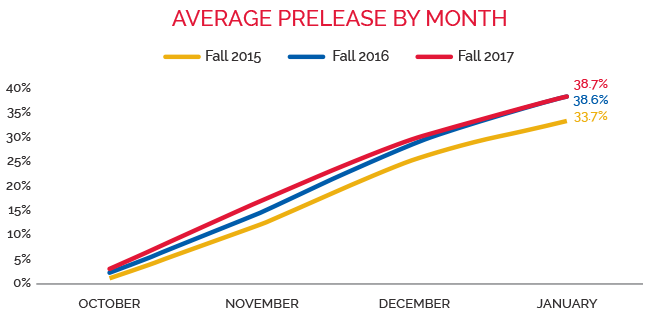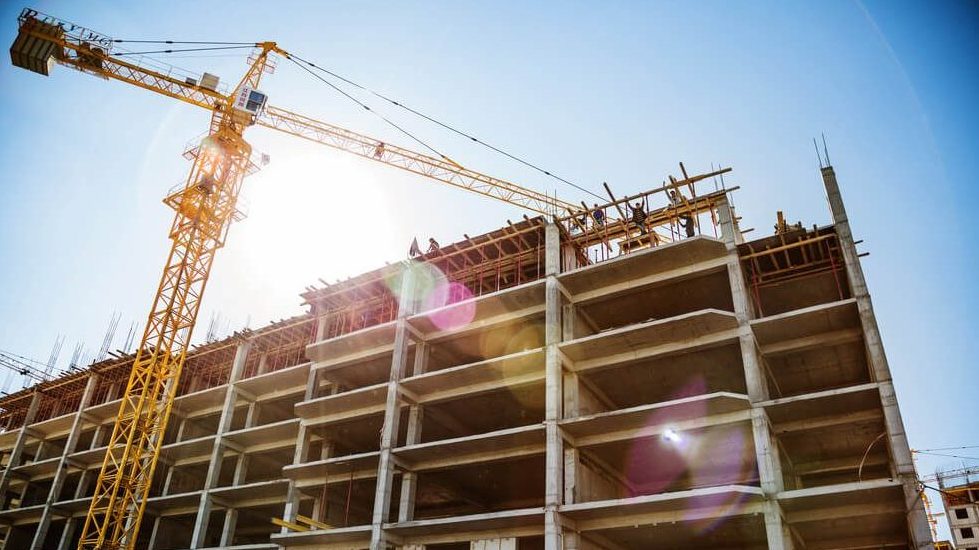As the student housing sector has grown, not only has the volume of beds increased, but the development process has begun to improve.
- Pipeline projects tracked by Axiometrics are breaking ground earlier, allowing for more time to complete construction.
- Properties are starting to lease earlier (which results in a longer leasing period), contributing to improved performance for properties in their initial lease-up year.
Starts:
Since 2013, construction of student housing properties has started a little over a year before scheduled delivery, averaging around 14 months from construction start to completion. A look at when most properties started construction over the past few years generated the following results:

Source: Axiometrics
Based on Axiometrics’ coverages as of December 2016. Only properties identified as
starting construction are included. Only includes off-campus purpose-built properties.
Note: The start dates include properties that may have been delayed. Also, figures mentioned below reflect the average start date for pipeline properties included in this analysis. This analysis is not based on when most properties or beds started construction, but the average start date and completion date for each year.
For properties delivered in 2013, the average start date was August of the year prior, leaving 13 months between start and completion. Over the years, the amount of time between start and completion has increased. The average was 13 months in 2014, with construction typically starting in July. For 2015 and 2016 deliveries, the average start date was May, and time from start to completion was generally 14 months.
Properties scheduled to deliver for Fall 2017 had an average start date of April, leaving an average of 15 months from start to completion. Keep in mind, these figures may include properties that have been delayed from one year to the next, but represent the overall averages for purpose-built properties delivered in the corresponding years.
Properties Beginning to Lease:
Leasing is also following a trend similar to changes in the construction timeline, starting earlier and extending longer.
Properties have begun leasing in October or November, on average. The projects delivered in 2013 started leasing an average of seven months before construction completion, while properties that delivered in 2014 had an average of eight months. Properties delivered in 2015 and 2016 allowed nine to 10 months for leasing. Those that will be delivered in 2017 are following a similar trend and will be leasing for at least nine months. Based on properties tracked by Axiometrics, the average month in which 2017 deliveries began leasing was October 2016, though 21% of these properties actually started leasing prior to that time.

Source: Axiometrics
Based on Axiometrics’ coverage as of January 2017.
Only properties identified as Lease Up are included.
Note: Properties begin leasing at different times based on market specifics, competition, and the university’s start date, among other factors. These trends reflect overall averages and can vary by individual university and asset.
Leasing Velocity:
Properties beginning their leasing process earlier in the year contribute to a higher leasing velocity earlier in the leasing season and fewer concessions later. While new developments are starting to lease earlier, so are existing properties.

Source: Axiometrics
Based on Axiometrics’ coverage as of December, 2016. Only includes properties that disclosed prelease
in corresponding months and years. Only includes off-campus purpose-built properties.
For Fall 2017, properties averaged over 3% preleased in October, compared to only 1.2% leased two years earlier. Existing properties continue to see strong leasing results and have maintained increased velocity through January. Since November, leasing velocity has averaged nearly 300 basis points ahead every month, with properties reaching nearly 40% preleased in January.
Earlier construction starts also reduce the risk of delays that could push move-in past the start of the fall semester – something no developer or property owner wants to see.







